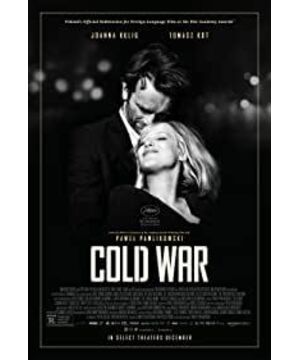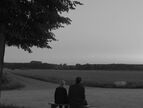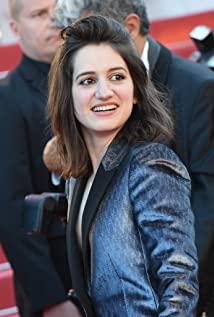It seems that what separates us from the story is not the screen, but a mass of air.
If you are serious about the composition analysis and light and shadow analysis of "Cold War", you can write a paper because it is too sophisticated and has a strong artistic temperament. But what "Cold War" throws to us is not only technical excellence, but also another topic-what are the black and white movies of the 21st century?
In this question, "Cold War" is undoubtedly an extraordinary success, because black and white films are very monotonous in color performance compared with color films, so they can also work hard on composition , light and shadow , and even refine to the height of pure art. .
So what does the lens express?
Many directors have to stumble on this issue because they don't value the language of the lens, and regard the lens as a servant of the plot, values, ideology, and so on.
In this film review, we will talk about how the images of "Cold War" use light seriously, and even raise the black and white light and shadow to the height of pure art. (Because there is too much to analyze in the composition)
The picture has its own language, and how to say it well is the key. In this night, three actors are sitting under the window, snow is falling outside, and some light enters. The angle of the light enters just to show the face and gesture of the actor. The director is like a painter, placing the light where he wants and making people feel comfortable.
In "Cold War", the mirror image has almost become an image, appearing on a large scale, and the shocking scene is at the banquet. In the first few seconds of this scene, I did not see that it was a mirror. The dust on the mirror itself gives the picture a halo. This halo is reminiscent of the mid-nineteenth century. When the photography technology was not yet mature, portrait photos often had a halo of smoke lingering around the portrait. For example, Lincoln's photo is like this.
Benjamin commented on this feeling of halo. He believed that it was a cooperation between the subject and the machine. The progress of the subsequent era and technological innovation allowed the camera to explore all light and shadows, eliminating those elusive light. Halo, the appearance of this mirror makes the actors under the mirror extremely clear, and makes the whole banquet shrouded in a sense of halo, which is amazing.
In the other scene, the main character’s performance is centered, and the expressions of other actors are fully displayed through the mirror, so that other actors will not become a personal head and props piled in front of the main character. In the art of showing people, the director is rich and impressive. Amazing technique.
Black and white movies are the overlap and performance of black and white in the nature of light. The good thing about "Cold War" is that it treats black and white as a language and interprets each other.
In this scene, everyone is playing music in the dark, and the door is suddenly opened. The impact of white light at this moment not only disrupts the balance of black on the screen, but also makes the musicians stop their work, just such a frame, A white light breaks into the black and destroys everything. In this way, the white light in this scene makes people feel full of destruction. The light in the hands of this director actually has a sense of morality. This is his remarkable place.
When the protagonists and heroines are embracing by the river, the reflection of the distant lights on the river forms the middle shot, making the picture a large depth in the back. This is an example of very clever use of light.
The most admirable thing about "Cold War" is the sense of air that often floats in the screen, and the embarrassment of turning black and white without digital video. This kind of air often comes from the diffusion and lingering of smoke, fog, air, etc., this diffusion softens the boundary between the audience and the movie, just like the portraits of the old age, there is no hole in the shot, and It is more or less hazy, it seems that what separates us from the story is not the screen, but a mass of air.
Because black and white movies have less color, more pure, the director can express the art more purely, the audience can more purely feel the power of monochromatic light and shadow, and test the director's skill.
View more about Cold War reviews











